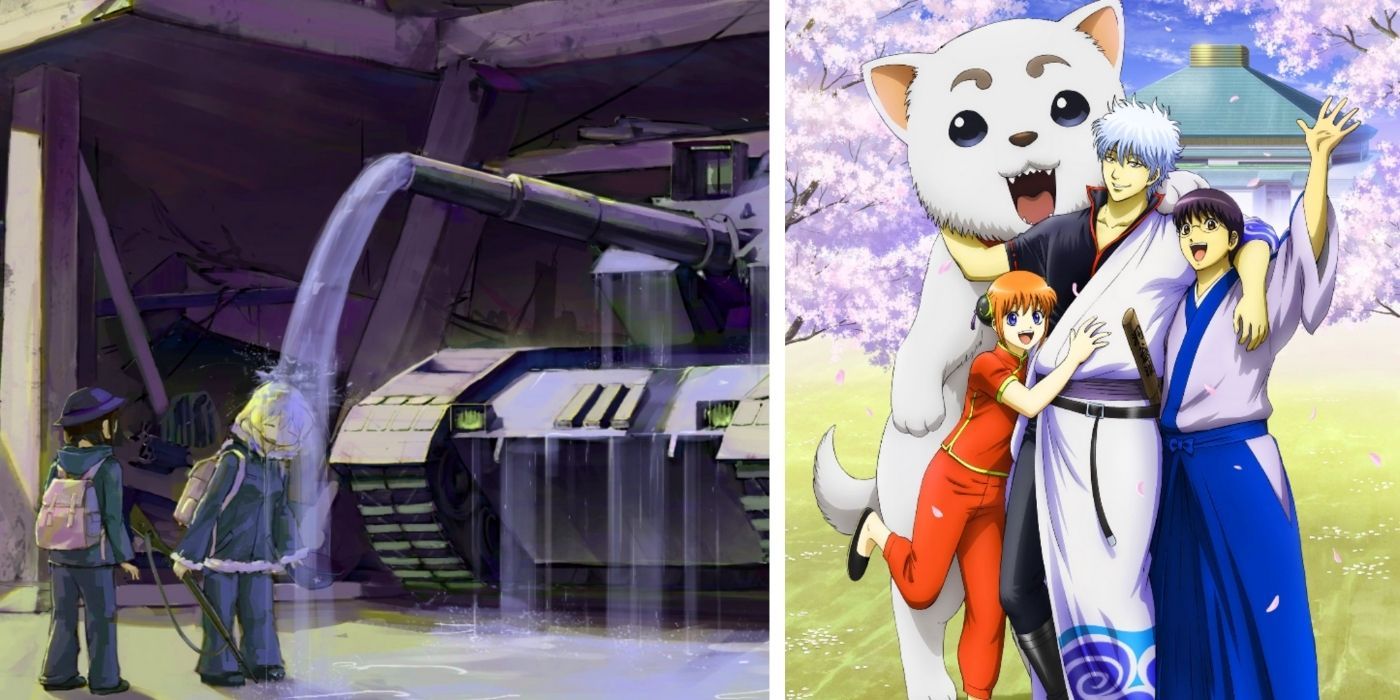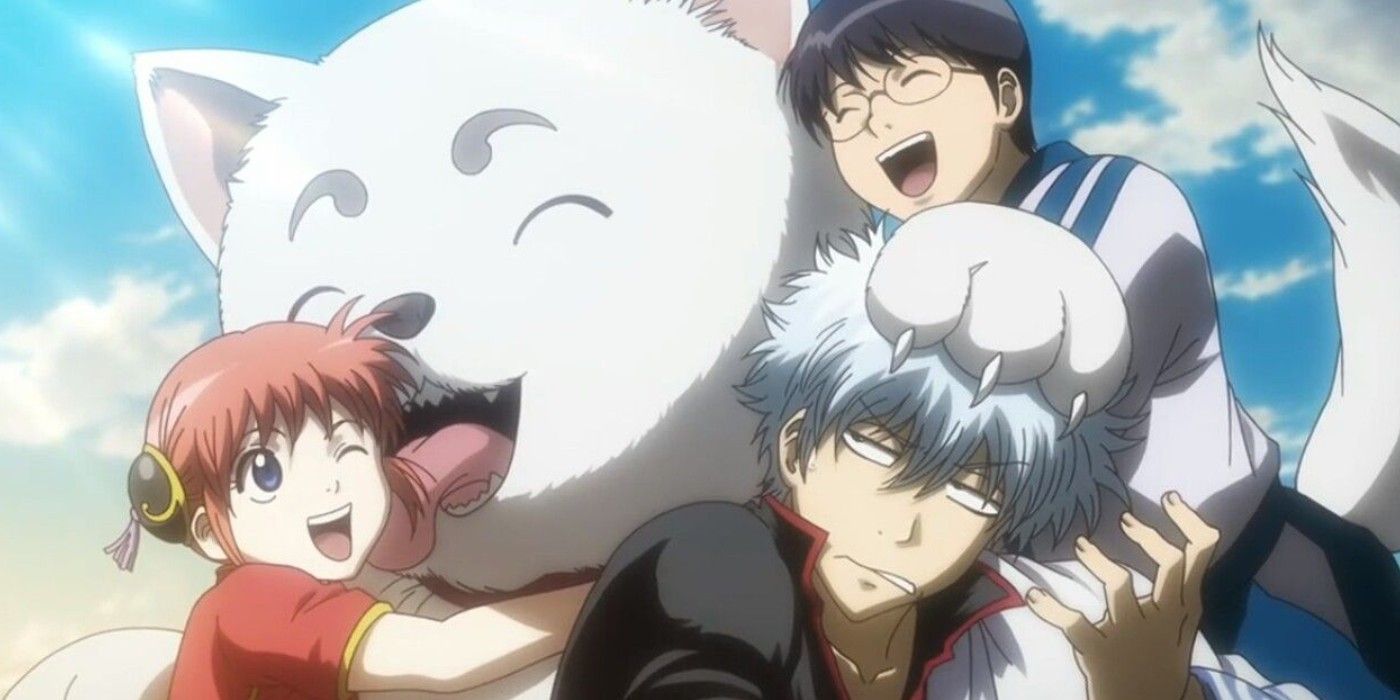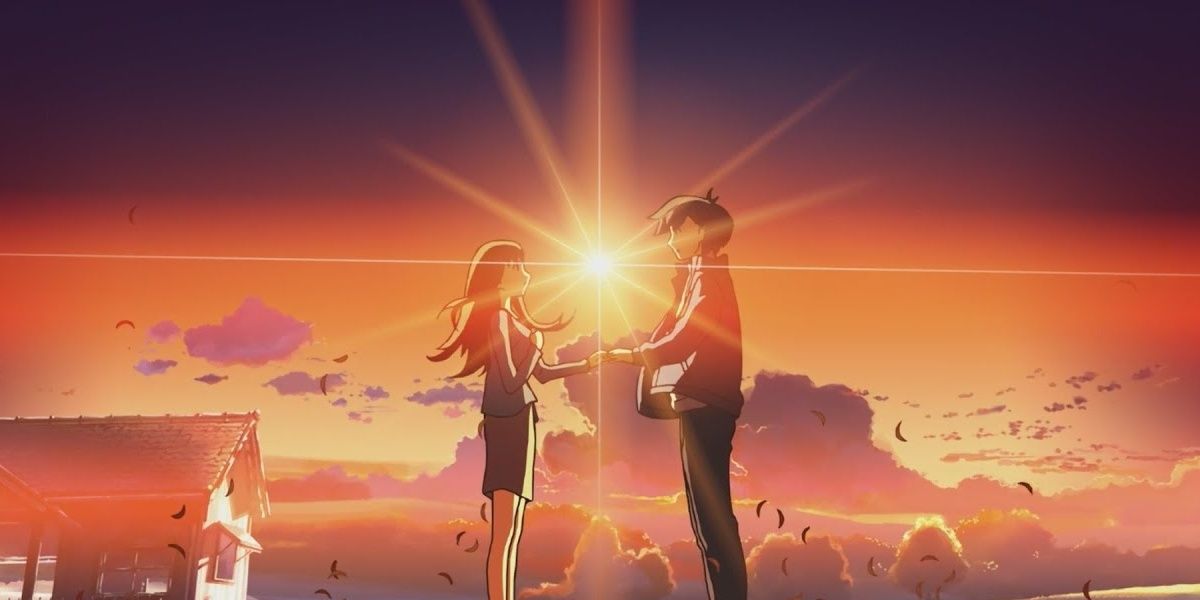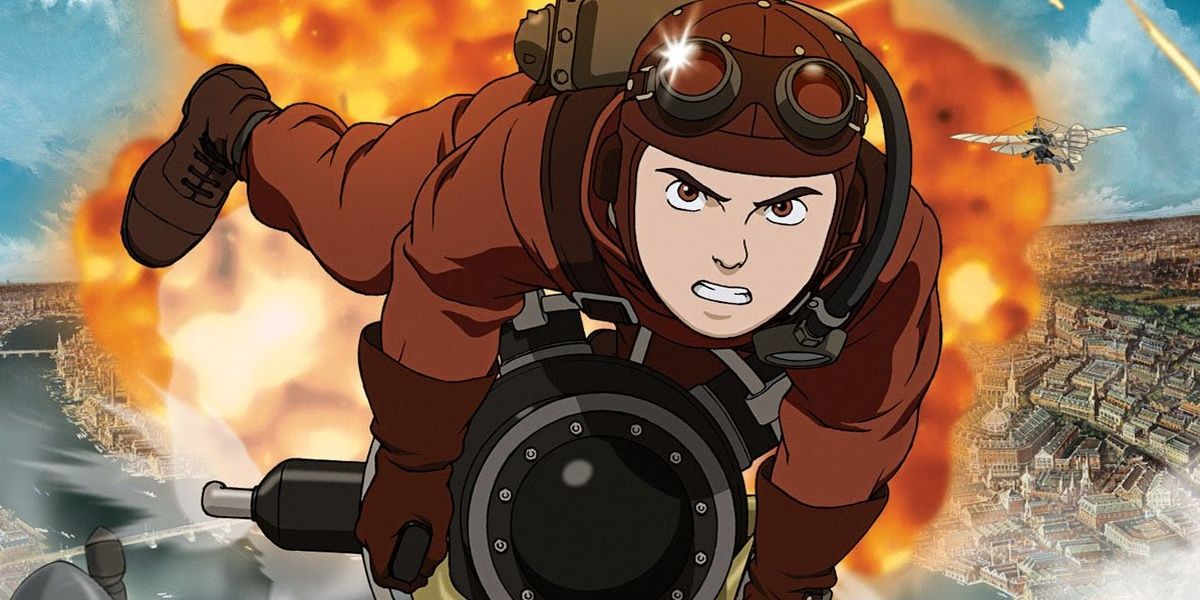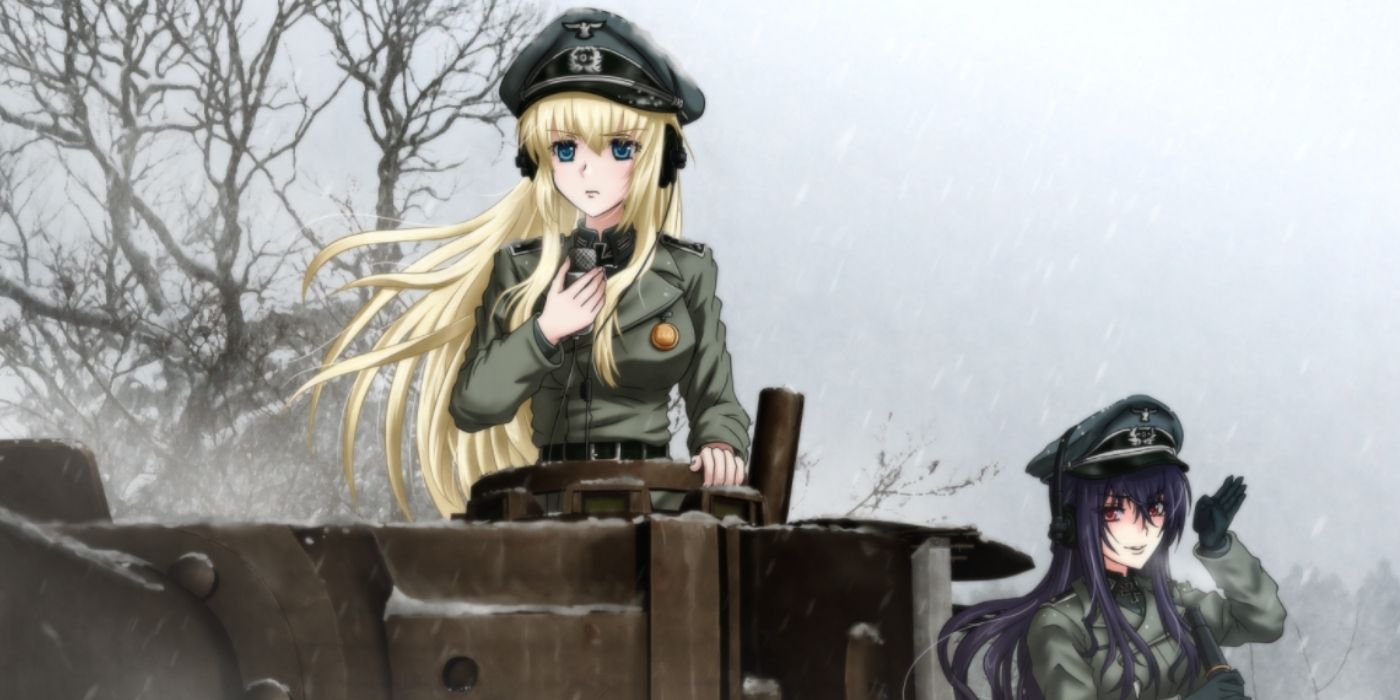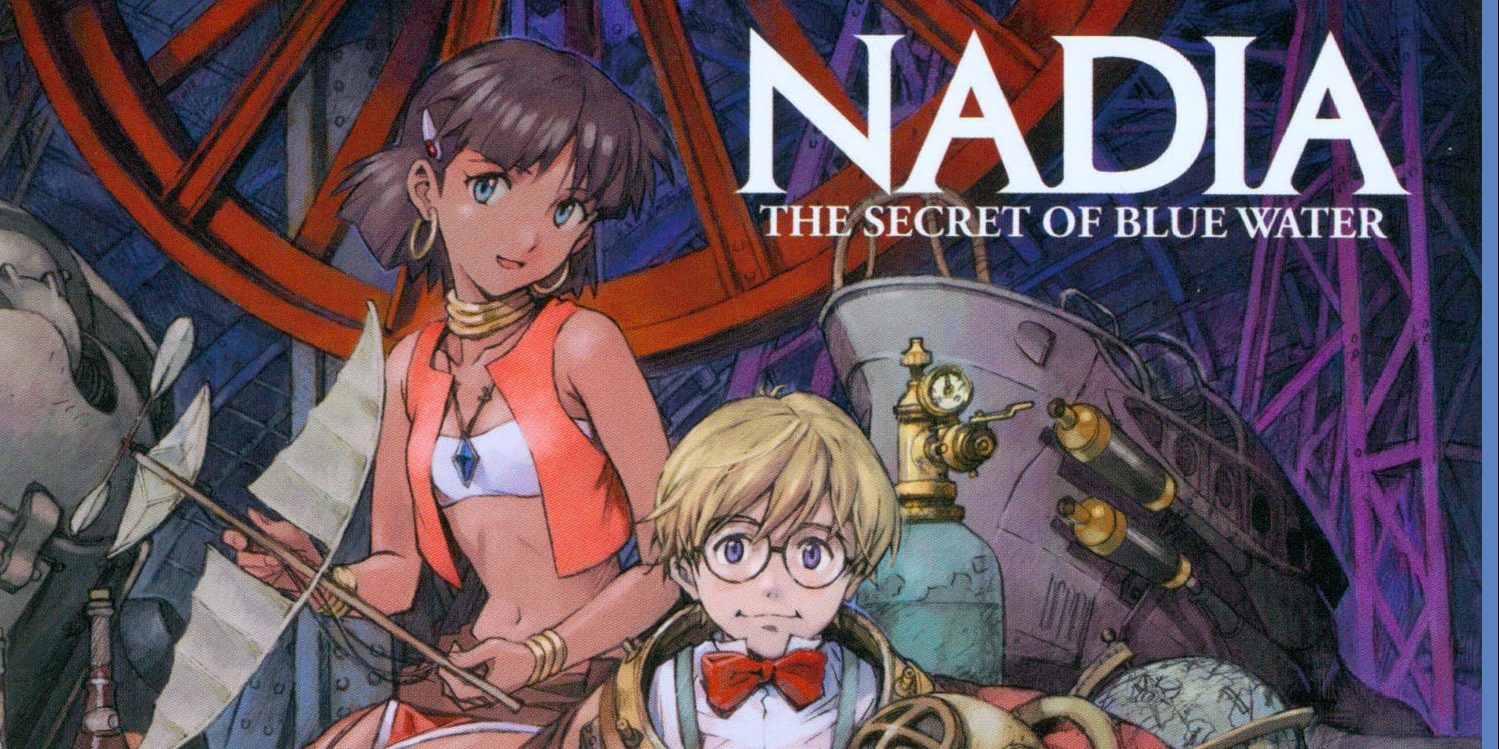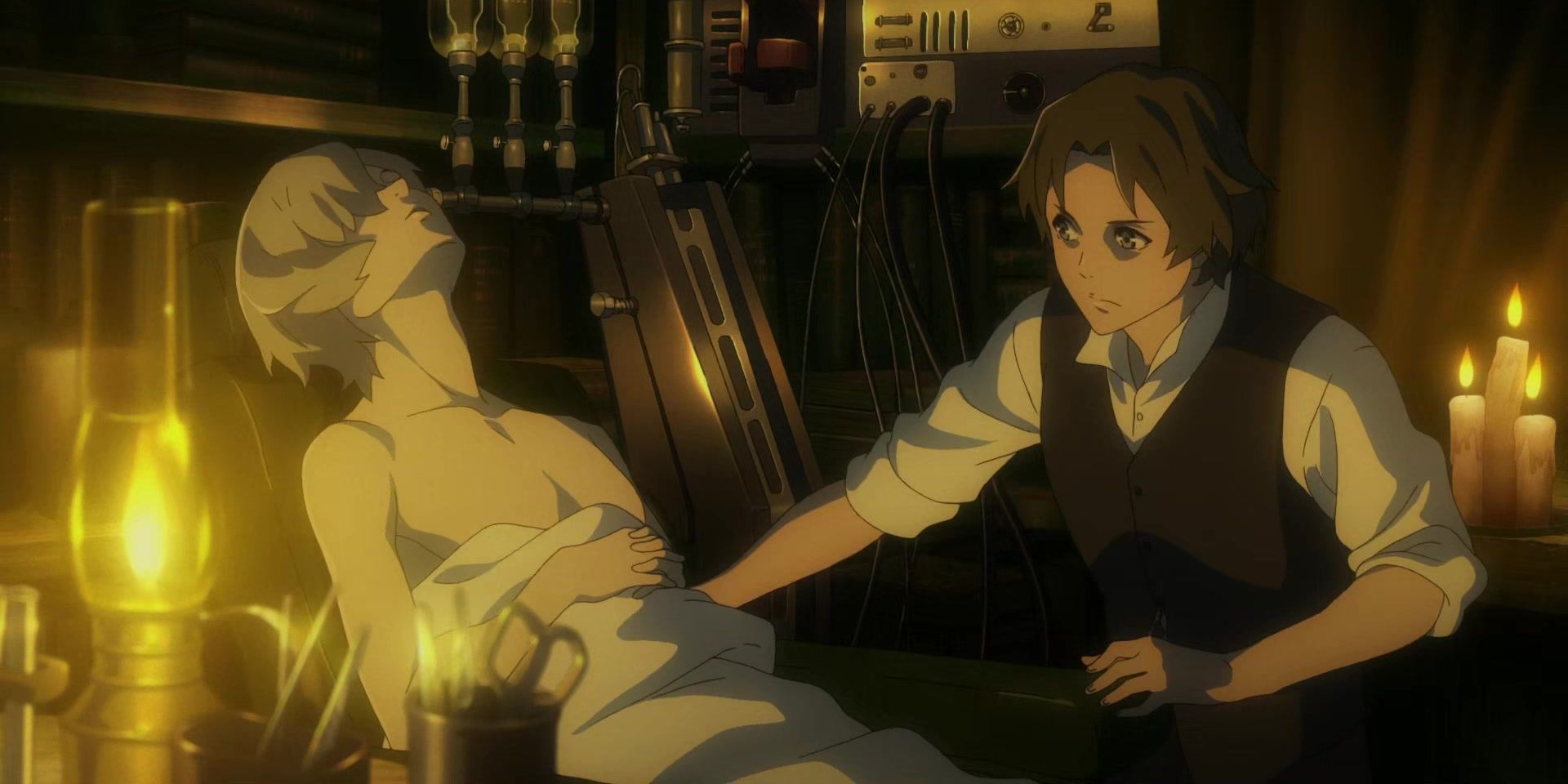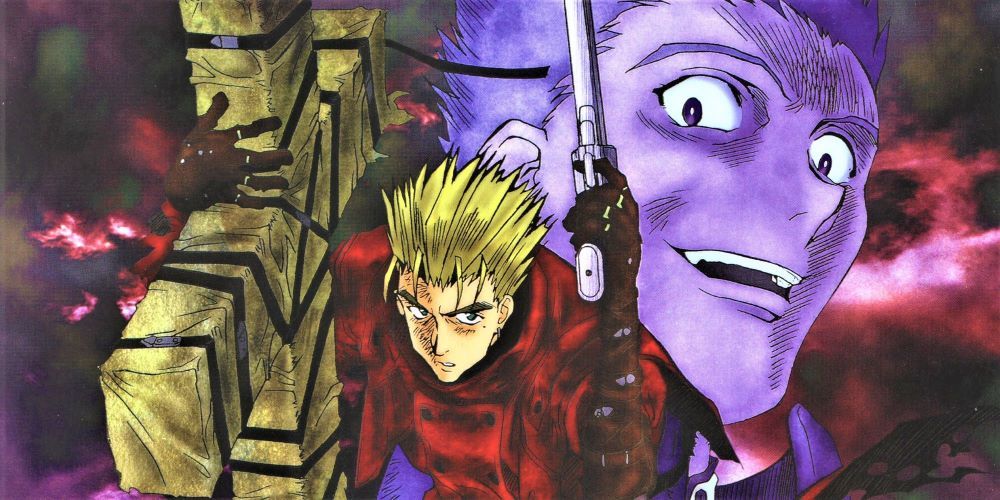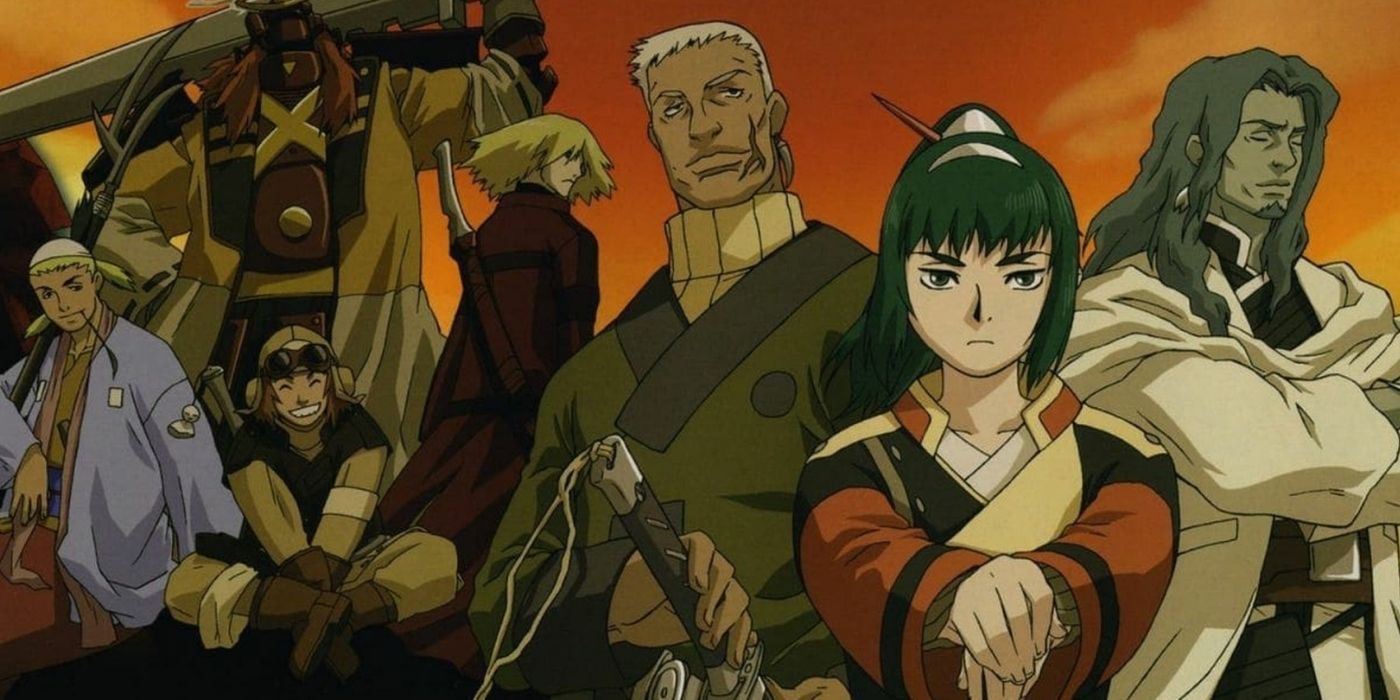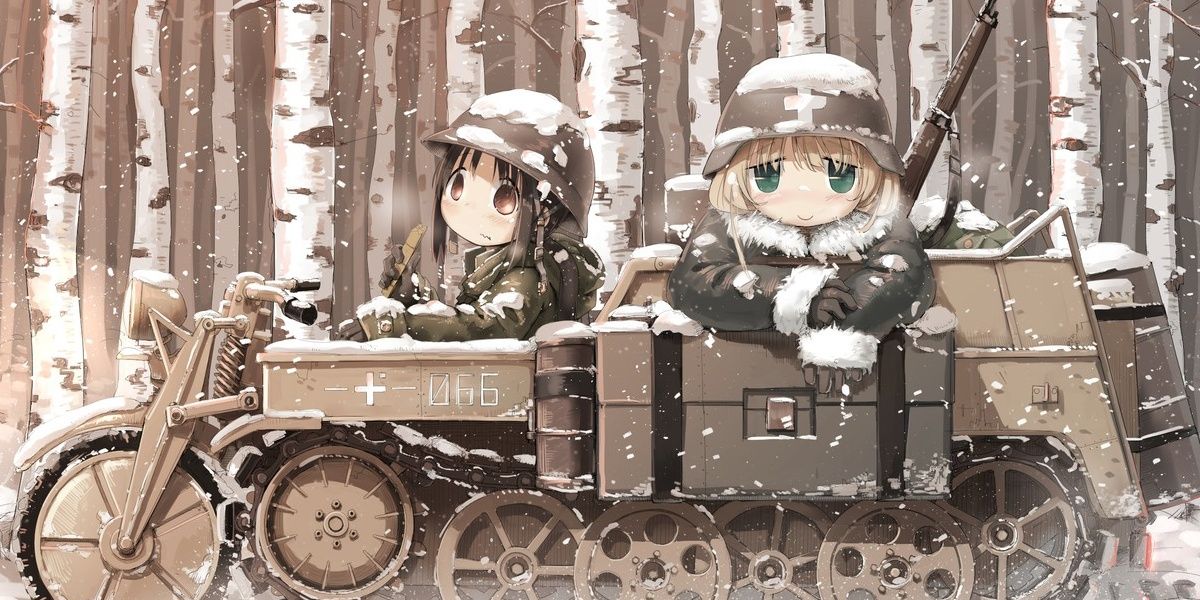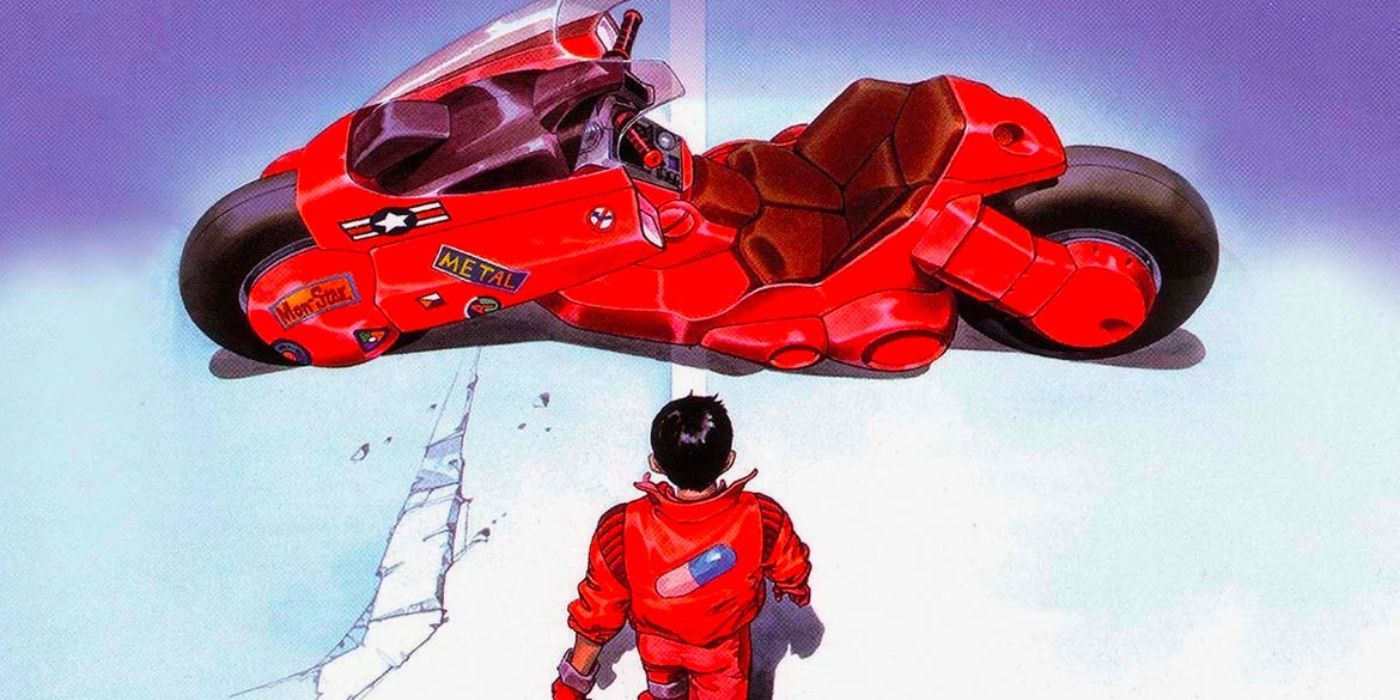Sci-fi and history stories aren't necessarily a match made in heaven. Most sci-fi series look to the future rather than the past when it comes to worldbuilding. And yet, alternate histories wouldn't exist if authors didn't explore how things might have gone differently in the past to lead to that alternate history.
Classic series like Star Trek understood the entertainment value of placing the crew of the Enterprise in '80s San Francisco or the Old West. While this approach to storytelling may not be as common in anime, there are a few gems that make for amazing historical sci-fi epics.
10 Gintama Blends Gags, Aliens, and the Edo Period
As rare as science fiction historical series are, one of the most popular shonen series of all time is a perfect example of how such a strange combo can work. More likely to be described as a gag anime, the oddball central premise, now familiar, often gets lost in the telling.
Gintama imagines a world in which Edo Japan has been invaded by space aliens and the Shogun himself has succumbed to their whims, leaving samurai like Gintoki out of work. Freelancing has rarely been as amusing as in Gintama, and alien invasions have rarely felt so mundane.
9 The Place Promised In Our Early Days Imagines Japan Under Russian Occupation
Man in the High Castle is perhaps the most famous example of a story about the ways that a war's outcome, if different, may alter the entire trajectory of the planet. While High Castle imagines a world in which the Nazis won, The Place Promised In Our Early Days imagines a reality in which Japan lost the Russo-Japanese War.
After years of Russian occupation, Hokkaido is a changed island, dominated by a soviet-built tower on the horizon. The tower begins to reshape matter around it, causing parallel worlds to collide. An early film by famed Your Name director, Makoto Shinkai, Early Days was a sign of great things to come.
8 Steamboy Is the Go-To Steampunk Anime
Steampunk reimaginings rarely work, as evidenced by lovable disasters like Wild Wild West (1999) and, more recently, The Nevers (2021). Yet, anime often pulls this challenging aesthetic off, due in part to the capabilities of the medium.
Set in an alternate 1863, Steamboy chronicles the adventures of a Mancunian boy who finds himself in possession of a steam-producing sphere potent enough to advance technology worldwide. While the animation is great thanks to the budget that was reportedly massive, the characters are somewhat lacking. And as the second major film ever directed by Katsuhiro Otomo of Akira fame, the bar was set incredibly high.
7 Schwarzesmarken Adds Aliens To The Cold war
Not all anime that combine history and science fiction are especially good. Such is the case with Schwarzesmarken, a military anime about soldier girls battling aliens during the Cold War. The show immediately suffers from tonal issues. Set in East Germany, the anime fails to properly address what was a delicate situation. Citizens were torn between loyalty to their Russian overseers and their familial roots, and in an anime context, none of it quite measures up. Adding a mess of mechas and aliens on top of it all just complicates matters.
6 Nadia: The Secret Of Blue Water Takes Inspiration From Jules Verne
Jules Verne is one of the most influential sci-fi authors of all time. Like Mary Shelley, Verne helped shape the genre, writing 20,000 Leagues Under The Sea and Journey to the Center of the Earth in the 1860s. It was only a matter of time before anime paid homage to his legacy.
Produced by Gainax in 1990, directed by none other than Hideaki Anno of Evangelion fame, and based on an idea put forth by the Miyazaki himself, Nadia: The Secret of Blue Water was something of a big deal back in its day. Set in 1889, Nadia tells the story of Jean, a young inventor, and Nadia, a circus performer trying to return home to Africa, as they explore the ocean's depths alongside Captain Nemo and contend with the forces of Neo-Atlantis intent on world domination.
5 Shisha no Teikoku Is Wit Studio's Frankenstein
Wit Studio became so synonymous with Attack on Titan that it was hard to imagine what the studio might produce next. Based on the works of Project Itoh, Shisha no Teikoku is a Frankenstein retelling set in an alternate 18th century England that incorporates a fresh take on neural technology. In Empire, scientists learn to create and upload artificial souls into their undead creations. Ambitious but convoluted, Empire of Corpses misses as many targets as it hits. At least it looks pretty.
4 Trigun Brings The Wild West To The Stars
There are more than a few Space Westerns in the anime medium, but Trigun remains among the most memorable. While the show may have aged poorly in some regards, it never loses sight of its core identity as a gunslinging exploration of human nature. The best Hollywood Westerns were essentially about the limits of human endurance, about finding a means to survive in an unforgiving landscape.
Vash and company are grounded on a desert planet called Gunsmoke. Saloons and trains make sense on a newly colonized planet, but the setting never quite forgets that it's somewhere else, thanks in part to the eerie lightbulb-shaped power plants that dot Gunsmoke's vacant landscape.
3 Samurai 7 Adds Futurism To A Classic Film
Kurosawa's Seven Samurai is one of the most iconic films of all time. Samurai 7 reimagines the classic samurai story within a science-fiction construct. Set in the wake of a futuristic war, the protagonists must vie against Nobuseri, former samurai who have combined their cells with machinery and begun to lose all traces of their humanity. Rather than bring science fiction to the past, Samurai 7 places this classic story in a futuristic world, pitting samurai against cyborgs.
2 Girls' Last Tour Incorporates Several Eras And Embraces None
An oddity among oddities, where does Girls' Last Tour stand when it comes to genre? Post-apocalyptic but noticeably anachronistic, the show refuses to settle into one easy category. The girls at the center of the story trawl across a devastated landscape in a KettenKrad, the production of which stopped in Germany in 1944. But this world almost certainly isn't 1940s Germany.
Amid the destruction, there are signs of a world that had embraced advanced technology, robots in the wreckage. Timeless and perhaps portentous, the girls reveal little about their circumstance, taking the audience along on their bleak journey across the detritus.
1 Akira's Version of 2019 Feels Like An Alternate Reality
Science fiction sometimes remains relevant long beyond the date it's set in. Back to the Future II is set in 2015, and 1984... in 1984. Though critics sometimes fail to grasp the concept, excellent science fiction doesn't usually attempt to predict the future. Instead, great sci-fi creators use futuristic settings to reframe the values of the societies they live in, to reflect on what current behavior says about the trajectory of humanity.
In this sense, Akira remains timeless. As a story about disenchanted youth, the inevitable fate of capitalism, and the devastating power of human greed and ambition, Akira reigns supreme and Neo-Tokyo is a warning to the world.

